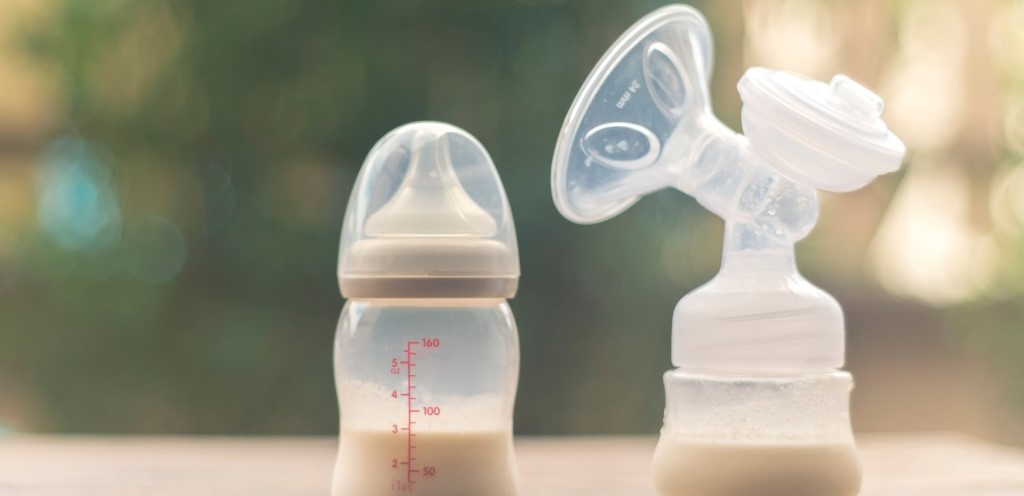Confused about which breast pump is best manual or electric? Choosing the right breast pump can make a world of difference in a mother’s breastfeeding journey. Whether it’s a first-time Mum looking for convenience or a seasoned parent managing work and home, breast pump selection is deeply personal. At Mumzworld, we understand how important this decision is—and why it matters to brands targeting mothers across different cultures. So, which breast pump is best: manual or electric? Let’s explore in depth.
Manual vs Electric Breast Pumps: What’s the Difference?
A manual breast pump is operated by hand, requiring the mother to squeeze a handle to create suction. It’s usually lightweight, compact, and more affordable. These pumps are popular among mothers who only need to pump occasionally and prefer something that doesn’t rely on power.
An electric breast pump uses a motor to generate suction, which can be continuous or intermittent depending on the settings. These pumps often offer variable suction levels and allow for double pumping, saving mothers considerable time. Some models are plug-in only, while others are battery operated breast pumps, adding convenience.
At Mumzworld, we stock both options, helping Mumz choose what suits their lifestyle, needs, and frequency of use.
The Pros and Cons of Manual Breast Pumps
Advantages:
- Affordable option: Great for Mumz on a budget or those who pump infrequently.
- Portable: Compact and lightweight, ideal for travel.
- Quiet: Virtually silent, offering discretion in public or shared spaces.
- Simple to use: Easy to assemble, operate, and clean.
Drawbacks:
- Manual effort required: Can be tiring, especially for extended sessions.
- Lower efficiency: Takes longer and yields less milk per session compared to electric models.
- Best suited for occasional use: Not ideal for Mumz who need to pump multiple times a day.
These features make manual pumps suitable for short-term or backup use rather than primary feeding strategies.
The Pros and Cons of Electric Breast Pumps
Advantages:
- Efficient and fast: Extracts more milk in less time, perfect for working Mumz or those with tight schedules.
- Double pumping capability: Reduces total pumping time.
- Adjustable suction levels: Offers better comfort and mimics natural feeding.
- Great for exclusive pumping: Designed for long-term, consistent use.
Drawbacks:
- Higher cost: Generally more expensive than manual models.
- Noise levels: Some models can be noisy, though newer designs aim for quieter operation.
- Requires power source: Battery life may be limited in portable models, and not all are ideal for travel.
- More parts to clean: Setup and maintenance can be slightly more involved.
Electric pumps come in various forms, including hospital grade breast pumps, which provide top-tier performance, especially in medical or postnatal care settings.
Matching Pumps to Mum Lifestyles
Each Mum’s lifestyle influences the kind of breast pump she’ll find most useful:
Working Mumz:
- Need something fast, efficient, and discreet.
- A hospital grade breast pump or high-quality battery operated breast pump allows for comfortable and quick pumping breaks during work hours.
- Models with easy-to-clean features are a plus for tight schedules.
Stay-at-Home Mumz:
- May benefit from the simplicity and quietness of a manual breast pump.
- Occasional pumping means affordability and portability are bigger priorities.
Exclusive Pumpers:
- Require durable, long-term solutions.
- An electric breast pump with adjustable suction settings is ideal for comfort and efficiency.
Mumz on the Go:
- A portable breast pump with battery operation ensures freedom and convenience.
- Compact models that fit easily into diaper bags are a must-have.
Comfort, Cleaning, and Convenience
Comfort:
Electric breast pumps usually allow for a more personalized experience, with adjustable suction mimicking baby’s natural feeding patterns. However, some Mumz prefer the hands-on control of a manual pump, especially in the early weeks.
Cleaning:
Manual pumps typically have fewer parts, making them easier to clean. Electric models, especially double pumps, may require more effort but offer dishwasher-safe components in some designs.
Noise Level:
Manual pumps are virtually silent, ideal for nighttime use or quiet environments. However, many Mumz opt for newer quietest breast pump models that keep disruptions minimal.
These practical differences heavily influence consumer preference and purchasing decisions.
At Mumzworld, we cater to all budgets, offering affordable breast pump options as well as premium, high-tech models from leading global brands.
Top Recommendations and Reviews
Top Rated Manual Pumps:
- Philips Avent Manual Breast Pump: Highly rated for comfort and ease of use.
- Medela Harmony Manual Pump: Trusted choice for occasional pumping.
Top Electric Options:
- Spectra S1 Plus: Known for being quiet, efficient, and hospital grade.
- Medela Freestyle Flex: Lightweight and designed for busy Mumz.
- Elvie Pump: A wearable, wireless solution perfect for multitasking Mumz.
Reading electric breast pump reviews and real-life testimonials helps build trust among first-time buyers.
Choosing Based on Features: What Matters Most
Some features can be deal-breakers for Mumz. Here’s what they often look for:
- Best pump for exclusive pumping: Double electric with hospital grade strength.
- Pump for occasional use: Manual or single electric pump.
- Breast pump with adjustable suction: Essential for comfort.
- Easy-to-clean breast pump: Saves time and avoids bacterial buildup.
- Quietest breast pump: Great for privacy and nighttime sessions.
Conclusion: Manual or Electric?
There’s no single answer to which is better—it depends on the mother’s needs, lifestyle, and routine. Manual pumps offer portability and simplicity for occasional use. Electric pumps provide power and convenience for frequent users and working mothers.
Call to Action
Explore our high quality breast pumps to browse our curated range of breast pumps and breast pump accessories and baby essentials, trusted by Mumz everywhere.






